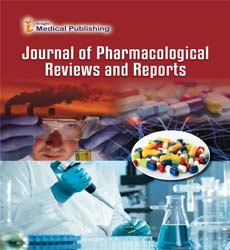Abstract
Pharm Sci 2020-Coronavirus Disease 2019 Pandemic Hopes Ride High on Targeting Known Drugs against Unkown- PGIMER, India
In December 2019, a novel severe acute respiratory syndrome coronavirusâÃâ¬Ãâ2 (SARSâÃâ¬ÃâCoVâÃâ¬Ãâ2) outbreak occurred in Wuhan, China, which rapidly spread to other parts of the world. The WHO has therefore declared the CoV disease (COVID) as a pandemic on March 11, 2020, and it needs to be tackled down at the earliest. The virus exhibits a very high transmission rate which can be witnessed by an increase in the number of new cases everyday across the globe. As of April 11, 2020, globally, the number of confirmed cases is in excess of 16 lakhs, with more than 99,000 deaths.
Till date, no specific and effective therapy exists against COVIDâÃâ¬Ãâ19. In view of this pandemic, there is an urgent need to find the potential treatment options against this novel CoV. Hence, a movement of repositioning of the drugs has been tried to tackle the problem. In the current SARSâÃâ¬ÃâCoVâÃâ¬Ãâ2 outbreak, a number of drugs have been in trial to evaluate their efficacy against the virus. Of all the drugs, antimalarial drug has gained much popularity because of its antiviral effect.
Chloroquine (CQ) was one of the frontâÃâ¬Ãâline drugs in the prophylaxis and treatment of malaria for many decades. Unfortunately, as CQâÃâ¬Ãâresistant Plasmodium falciparum strains emerged, it led to the decline in the efficacy of the drug. Apart from the efficacy of CQ against
various bacteria and fungi, the drug also exhibits efficacy against different viruses such as HIV,
rabies virus, and poliovirus. With regard to CoV, the potential therapeutic benefit of CQ was observed against SARSâÃâ¬ÃâCoV. As per the preliminary reports from Chinese authorities, around 100 patients were treated with CQ. These patients showed more speedy fever decline, improvement in lung computed tomography images, and it took less time to recover compared with control groups, with no serious adverse effects. Therefore, Chinese medical advisory board has suggested the inclusion of CQ in the guidelines for SARSâÃâ¬ÃâCoVâÃâ¬Ãâ2 treatment. The virus requires low pH for replication including fusion and uncoating. CQ alkalizes phagolysosome which hinders these pHâÃâ¬Ãâdependent steps. During the outbreak of SARS in 2003, many molecules apart from CQ were tested to evaluate their effectiveness against the virus. By inhibiting pHâÃâ¬Ãâdependent enzymes like proteases or glycosyltransferases, CQ was able to disrupt the viral proteins maturation and posttranslational modification of viral receptors like angiotensinâÃâ¬Ãâconverting enzyme 2 (ACE2) in case of SARSâÃâ¬ÃâCoV. In an in vitro study, CQ was able to act at both entry as well as postentry stages of viral infection in Vero E6 cells. On oral administration, CQ gets distributed in the entire body including the lungs. The EC90 value of CQ in Vero E6 cells
against COVIDâÃâ¬Ãâ19 was 6.90 µM, which may be clinically attainable as established in the plasma of rheumatoid arthritis patients who received 500 mg of CQ.
Being an analog of CQ, hydroxychloroquine (HCQ) has got fewer side effects and drug–drug interactions. In a study by Yao et al., HCQ showed a better activity against SARSâÃâ¬ÃâCoVâÃâ¬Ãâ2 in vitro when compared to CQ. It also showed a better antiviral activity as demonstrated by the EC50 values for HCQ being lesser than the EC50 values for CQ. Furthermore, HCQ has showed antiâÃâ¬ÃâSARSâÃâ¬ÃâCoV activity in vitro in the previous SARS outbreak. In a few patients infected with SARSâÃâ¬ÃâCoVâÃâ¬Ãâ2, an increase in the levels of interleukin (IL)âÃâ¬Ãâ6 and ILâÃâ¬Ãâ10 has been observed which may later lead to cytokine storm, subsequently leading to multiâÃâ¬Ãâorgan failure and death. Both CQ and its analog HCQ are known to suppress an increase in immune factors, thereby exhibiting an immunomodulatory effect. Based on these findings, HCQ may serve as a therapeutic option against SARSâÃâ¬ÃâCoVâÃâ¬Ãâ2 infection because of its antiviral effects and its ability to suppress the cytokine storm by virtue of its immunomodulatory effects. However, there are limited data regarding their use in SARSâÃâ¬ÃâCoVâÃâ¬Ãâ2; hence, clinical trials are ongoing to evaluate their effect in these patients.
A study conducted by Jun et al. showed that there was no statistically difference in negative nucleic acid throat swabs on day 7 between HCQ group and control group; in fact, the negative throat swab was more in the control group, and worsening of a patient in HCQ group was observed. A small sample size of just 30 in the study could be responsible for such results. Another study conducted by Gautret et al. found that the use of HCQ reduced the viral load significantly in patients suffering from
COVIDâÃâ¬Ãâ19. The study showed a synergistic effect in the reduction of viral load on combining HCQ and azithromycin when compared to HCQ alone. Previously, azithromycin has shown some benefits in preventing severe respiratory tract infections when given to patients with a viral infection. However, even here, the sample size was quite small, so more studies are required with a high sample size to generate much more robust evidence.
Author(s): Bikash Medhi
Abstract | PDF
Share This Article
Google Scholar citation report
Abstracted/Indexed in
- Google Scholar
Open Access Journals
- Aquaculture & Veterinary Science
- Chemistry & Chemical Sciences
- Clinical Sciences
- Engineering
- General Science
- Genetics & Molecular Biology
- Health Care & Nursing
- Immunology & Microbiology
- Materials Science
- Mathematics & Physics
- Medical Sciences
- Neurology & Psychiatry
- Oncology & Cancer Science
- Pharmaceutical Sciences

